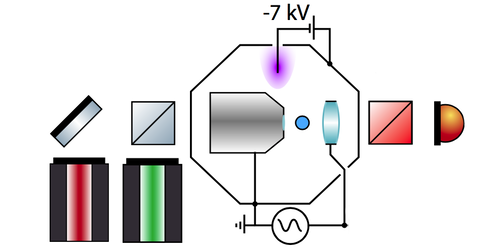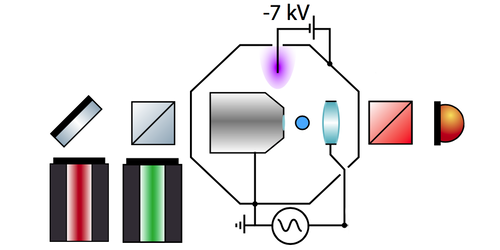How to Discharge a Levitated Nanoparticle
Researchers studying the limits of quantum mechanics sometimes take an oscillating object and try to reduce the amplitude of its motion to its ultimate limit—the quantum-mechanical ground state. For example, the oscillation of a nanoparticle levitated by light can be reduced, but there are several sources of noise affecting the motion that are hard to control. Martin Frimmer and colleagues from the Swiss Federal Institute of Technology (ETH), Zurich, have now found a simple way to wipe out one of these noise sources: they can eliminate random electrostatic forces by removing all charge from the particle.
The researchers’ technique discharges the particle with the help of a wire, which they add to the typical setup for levitating a nanoparticle with a laser in a vacuum chamber. The wire is connected to a high-voltage source and protrudes into the chamber. The wire tip is 5 cm from the levitated particle, which oscillates in its laser trap, driven by an oscillating electric field. The researchers found that, when the high voltage is turned on, it generates ions and electrons in the chamber’s residual gas. Some of these charges attach to the particle, so its oscillation amplitude changes randomly in time but in discrete steps, which are associated with the transfer of integer numbers of elementary charges onto the nanoparticle. The team could then either precisely charge the nanoparticle or completely discharge it by turning off the voltage at the right times.
This research is published as a Rapid Communication in Physical Review A.
–Ana Lopes
Ana Lopes is a Senior Editor of Physics.





